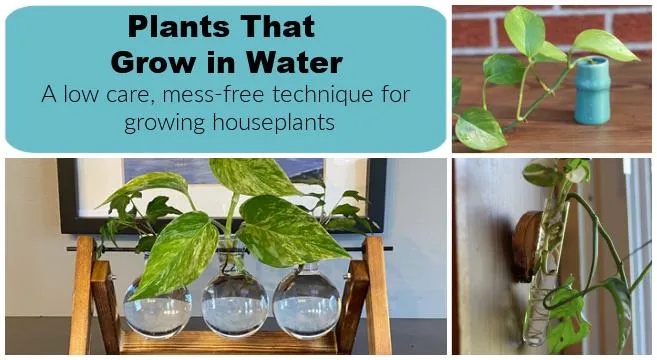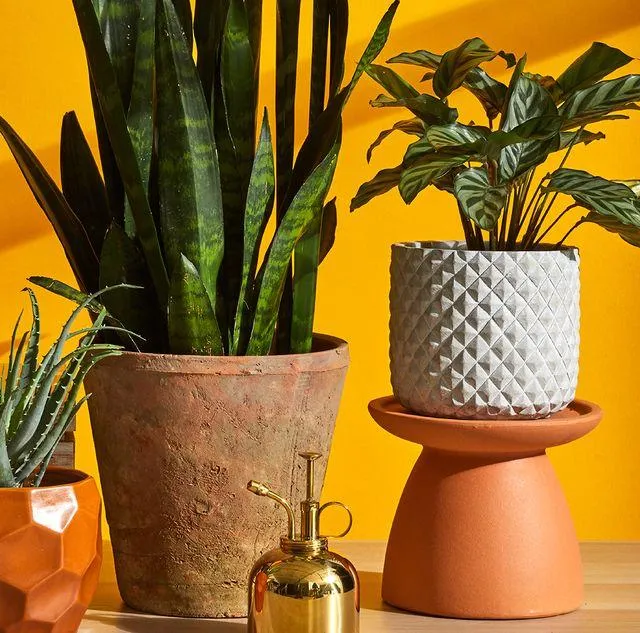Why Choose Wall Plants?
Wall plants are a terrific option for adding green to your indoor space in a creative way. From my experience, they’re perfect if you’re short on floor space or want plants in high-traffic areas where dogs and kids play. Here are some top reasons to give wall gardening a try:
- Maximize limited space. Wall plants let you utilize vertical real estate that would otherwise go unused.
- Brighten up large blank walls. Strategically placed wall greenery can help cheer up and decorate bare walls.
- Add visual interest at eye-level. Hanging plants draw attention at the perfect height for admiring their beauty.
- Thrive with less maintenance. Many wall varieties are low-water and low-light options perfect for neglectful plant parents like me.
With the right selection process and care habits, wall gardening is a beginner-friendly way to bring the joys of indoor horticulture to any home or apartment. Let’s explore your best wall plant options!
Top Indoor Wall Plants to Consider
Pothos
Pothos is the indestructible champion of indoor plants. I’ve seen this guy thrive in offices with fluorescent lighting and weekly neglect. Its heart-shaped leaves come in vivid shades of green, yellow and more. I have faced situations where pothos bounced back from the brink of death, refusing to surrender. Truly a plant that forgives mistakes.
Philodendron
With their beautiful broad and glossy leaves, philodendrons have a lush, tropical vibe. Varieties like ‘Brazil’ and ‘Heartleaf’ handle low-light like a champ. Despite being dramatic floor plants, many philodendron species also do well cascading down walls. Their vines can get lengthy though, so give them space to trail.
English Ivy
With its delicate 3-lobed leaves and tendency to climb, English ivy creates a lovely cascading effect on walls. It thrives in shade but can succumb to overwatering. I keep mine on the dry side to avoid crispy brown edges. English ivy adds elegant greenery without demanding strong lighting.
Spider Plant
Spider plants are remarkably durable with their grassy foliage and miniature plantlets that form along the leaf edges. These adorable plant babies can then be removed and rooted in water or soil for multiplication. Here’s a real-life case from my practice – a spider plant survived a two-week vacation with no watering! Ideal for locations with low humidity too.
Peperomia
With their cute round or heart-shaped leaves coming in unique multi-colored varieties, peperomias add visual punch as wall accents. Kind of like succulents, they store water in thick leaves and leaves them well-suited to infrequent watering. Lighting can be low or bright indirect, so peperomias are a versatile pick.
How to Care for Wall Plants
Now that you’ve selected some top candidates, here are some pointers for keeping your wall garden healthy:

Watering
Most wall plants need water only when the top inch or two of soil is dry. Basically check every 7-10 days rather than following a strict schedule. Water thoroughly until drainage occurs, then discard excess in the saucer.
Light
Bright, indirect light is best to prevent leaf burn. South or east-facing windows typically work well. Pothos and philodendrons tolerate very low light while ivies and ferns prefer more. Adjust placement as needed throughout the seasons.
Fertilizing
In the active growing season (spring-fall), use a liquid houseplant fertilizer at half the recommended strength every 4-6 weeks. This provides key nutrients for healthy growth.
Pruning
Snip off any non-vining stems that fail to climb on philodendrons and pothos to encourage upward growth. Trim leggy English ivy stems to maintain a full shape.
Pests
Check routinely for signs of pests like Spider mites. Isolate and treat with neem oil if needed. Prevention via cleanliness and occasional showering is best.
humidity
Some greenery like ferns prefer higher humidity. Try pebble trays beneath plants or a humidifier, especially in dry winter air. Most wall greenery tolerates average indoor humidity though.
Setting up Your Wall Garden
The setup is the fun part! Here are some effective wall planting techniques:
Hanging Planters
Macrame hangers, wall brackets and shelves let you display pots beautifully. Use all-purpose potting soil and drainage holes. Occasionally remove to check roots and repot upsized pots as needed.

Trellises and Moss Poles
Use poles, twine or plastic trellises to train vining plants to grow vertically. They add structure for plants to cling to as they cascade.
Command Strips
These reusable adhesive strips are great for attaching lightweight containers directly to smooth surfaces. Remove and replace as needed without damaging the wall.
Wall Shelves
Floating shelves provide stable display areas for alignment. Just be sure the wall and hardware can support plant and pot weight over time.
Wall Grid Panels
Prefabricated modular wall panels with built-in pockets let you create customizable geometric patters of greenery. They install easily without tools.
Get creative with your combinations! Experiment with plants at varying heights and groupings for visual interest as your collection grows.
Dealing with Problems
No wall garden is perfect, so issues may arise. Here are tips for fixing common indoor plant problems:
Brown Leaves
Often due to overwatering. Improve drainage and check soil isn’t soggy. Cut off affected sections to encourage new growth.
Pests like Spider Mites
Isolate the plant and treat immediately with neem oil or insecticidal soap. Repeated cleanings and sprays may be needed to fully eliminate.

Leggy Vines
Snip off leggy sections and propagate cuttings for bushier plants. Move to brighter light to prevent stetching. provide support for climbing.
Lack of Growth
Could be lighting is too low or soil has depleted. Rotate plant positions weekly and fertilize during growing season per package instructions. Repot if rootbound too.
With some TLC, you can overcome minor wall garden struggles. Don’t be afraid to experiment until you find what works best for each plant!
In Closing
Indoor wall plants are such a visually appealing and low-maintenance way to infuse more nature indoors. On the other hand, however, they undoubtedly pose at least one downside – once you start, it’s hard to stop adding new treasures to your collection! Consider branching out to try other creative propagation methods, like mounting air plants to boards or stringing together a living mobile. With diligent care, your indoor foliage art installation will thrive for years to come. Happy planting!
Top Indoor Wall Plants
| Plant | Care Level | Light Needs | Watering | Description |
|---|---|---|---|---|
| Pothos | Low | Low | Let soil dry out between waterings | Hardy vine perfect for low-light areas; variegated or solid green leaves |
| Snake Plant | Low | Low | Let soil dry out completely | Tall grass-like leaves that are tough and tolerant of neglect; |
| Chinese Evergreen | Low | Medium | Let soil partially dry | Affordable with colorful, thick leaves that come in many varieties |
| Philodendron | Low | Low-Medium | Let soil partially dry | Vining plant with heart-shaped leaves excellent for hanging baskets |
| Spider Plant | Low | Low-Medium | Let soil partially dry | Tolerates low light and creates plantlets on long, arching stems |
FAQ
-
What kinds of indoor plants are easy to care for?
Some good choices for easy care indoor plants include pothos, snake plant, Chinese evergreen, and peace lily. They can tolerate low light and don’t need frequent watering.
-
How often should indoor plants be watered?
Most indoor plants should be watered when the top inch or so of soil feels dry. However, this can vary depending on the plant type and conditions. Snake plants, for example, can go longer between waterings. A good rule of thumb is to water every 7-10 days.
-
Is it hard to keep plants alive indoors?
Despite what some folks say, keeping indoor plants alive ain’t that difficult. You just gotta meet their basic needs for light, water, and nutrients. Pay attention to signs of thirst or too much sun, like droopy or yellowed leaves. Be patient too – plants won’t look amazing overnight. With some TLC, your indoor friends will be thriving in no time.
-
What’s the best way to care for leafy indoor plants?
Many leafy plants like peace lilies or philodendrons have a kinda thin leaf texture. To keep the foliage looking fab, go light on the water and don’t let the soil get too soggy. These beauties also enjoy some fertilizer during the growing season. Scrub dusty leaves with a cloth every once in awhile too. Following these simple tips will have your leaf lovers feeling lush for years to come!

-
When should indoor plants be repotted?
Most indoor plants will need a new pot every couple of years. Signs it’s time for a repot include crowded rootballs overflowing the drainage holes or soil that’s completely broken down. Spring is generally a good time to repot, giving your plant bros time to establish before winter. However, some folks have better results repotting in early fall instead. The right time depends on the specimen – go with what works for you and your green buddies!
-
How do you care for succulents indoors?
Succulents are famous for being nearly unkillable indoors. Give them medium to bright light and only water when the soil is fairly dry. In fact, it’s easy to overwater succulents so go slowly. They also love good drainage – make sure the pot has holes on the bottom. Fertilize during spring and summer. And don’t be afraid to try different soil mixes like cactus soil or perlite to see what your succs seem happiest with. With very minimal TLC, your succulents will no doubt live a long and happy life!
